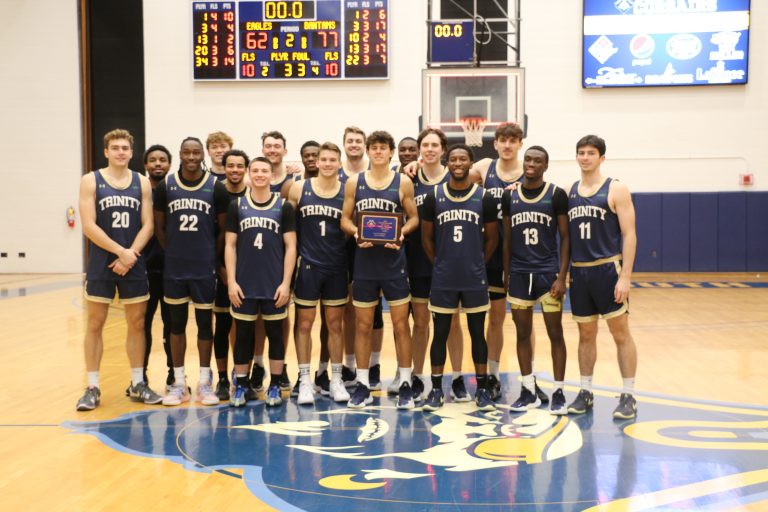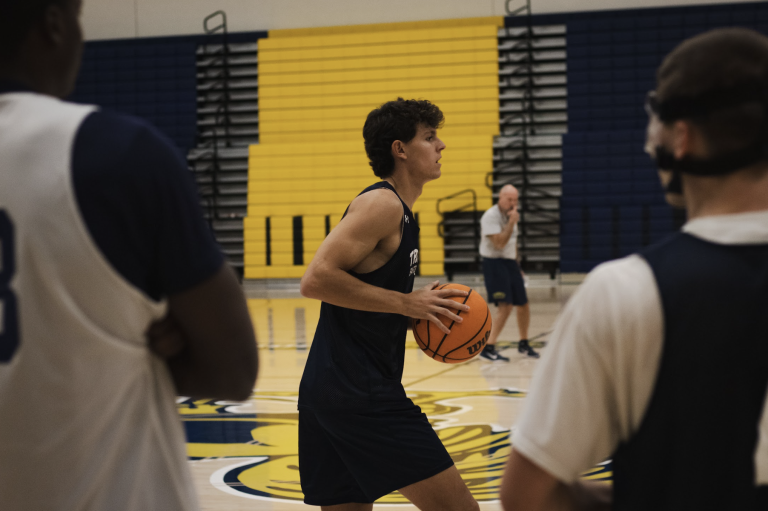Anna Bauer ’23
Sports Editor
With the National Football League just finishing week three of a 17-week season, excluding playoffs, the Tripod sports editors thought football would be the perfect choice for the second “Sports for Rookies” segment.
For starters, at least in New England, there are two types of football fans: the ones who love Tom Brady or the ones who hate him and his, now former, coach Bill Belichick – but the Tripod has no bias towards either side of course.
Just like in ice hockey, the point of the game is to simply outscore the other team. Teams are made up of 53 players, but only 11 can be on the field at once. Within a football team, such as the Patriots, there are offensive teams, defensive teams, and special teams which are usually only on the field during kicking plays. The job of the defense is to stop the ball from advancing down the field. The offense must advance at least 10 yards within four plays, also known as downs; otherwise, the ball turns over to the opposing team. However, if the offense is successful in doing this, they have a new set of downs to try to move the ball another 10 yards to maintain possession.
The game is divided into four 15-minute quarters. Theoretically, this would make the game only one hour, however, excluding the usual 12-minute halftime period, the games have a tendency to be closer to three hours long as the whistle is blown quite frequently because of penalties. So, if anyone, possibly an annoying younger brother, ever says “there’s just five minutes left of the football game, then the TV’s yours,” you had better get comfortable.
In both pre-season and regular season, if the game is tied at the end of the four quarters, a 10-minute overtime period will occur. During this time, if the first team to possess the ball scores a touchdown, the game is over, but if they score a field goal, the other team gets a chance to possess the ball. If this overtime period ends and the game is still tied, the game will be recorded as a tie – a rather rare thing! Post-season, however, is a different story because the games cannot end in a tie, so multiple overtime periods will continue until a winner is determined.
Each game begins with the kickoff and the winner of the coin toss chooses whether they want to receive the kick-off or kick the ball. Alternatively, they can choose which endzone they will defend. Depending on the choice made, the kicking team will kick the ball from their 35-yard line and, hopefully, one of the opposing players will catch the ball and begin running it up the field.
As referenced earlier, in order to be the winner you have to score the most points, so to do this, teams usually strive for touchdowns as that is what is worth the most points – six. From a touchdown, teams can either gain one or two extra points depending on if they decide to kick the ball into the field goal (worth one-point) or attempt a two-point conversion where they run or pass the ball into the end zone. However, given that a team only has four downs to get 10 yards and there is a lot of tackling, it can be quite difficult to score a touchdown. So, on the fourth down, usually when players are already inside the 35 yard line, a team can decide to either kick the field goal – worth three points – and hopefully their kicker can accurately kick the ball through the uprights, or they can “go for it” and if they fail, it is a turnover. The last way to score is through a safety. A safety, worth two points, is when a player who has the ball is tackled in their own endzone; the team who does the tackling will receive the two points and get the ball back.
Once the game starts, there are quite a few penalties that a referee can call, however, what you need to know is that the consequence of most penalties is yardage which moves the teams further away from the endzone they are trying to reach; in other words, try not to get a penalty.
While football is definitely known for its tackling, it is important to note that a player cannot tackle someone who does not have the ball. Because of this, penalties like pass interference (when a defensive player comes into contact with the intended receiver prior to him catching the ball) or defensive holding (when a defensive player holds/tackles an offensive player who does not have the ball) can be called.
The last aspect of the game that is more than worth noting would have to be the Super Bowl. The Super Bowl is the endgame for all NFL players and teams. The NFL is divided into two conferences: the American Football Conference (AFC) and the National Football Conference (NFC). Each conference has 16 teams with four in each division (North, South, East, and West). The top six teams from each conference advance into the playoffs and the last undefeated team from each conference plays in the Super Bowl. Even people who do not love football can love the Super Bowl for a couple of reasons: 1) the snacks, 2) the commercials, and 3) the extravagant half-time show.
There is so much more to football than just what is written above, so if you have a sudden urge to learn about the many penalties that can be called or you want to put your knowledge to the test, make NFL Sunday night football a fun activity after a long day of studying in the library. With any luck, our very own Bantam footbal team will be able to play in the spring and you can come out and support!








+ There are no comments
Add yours